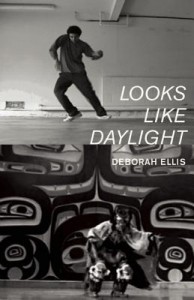Good New Books About Today’s Native Americans – Part 1
 Very few books have been written about or by Native Americans, less than 1% of all books published for children! Most “Indian” books are about people from the past – not the present – about chiefs and princesses or re-told legends. But like all children, Native children want to see- and need to see – their own stories in books. They want to read about kids like themselves.
Very few books have been written about or by Native Americans, less than 1% of all books published for children! Most “Indian” books are about people from the past – not the present – about chiefs and princesses or re-told legends. But like all children, Native children want to see- and need to see – their own stories in books. They want to read about kids like themselves.
Books about contemporary Natives are needed. Stop the stereotypes! American Indians do not walk around wearing skins and feathers and waving tomahawks. They don’t live in teepees just as today’s suburbanites don’t live in log cabins. Native Americans are not past tense. Native people participate in all professions. Native children compete in basketball and soccer, chat on Facebook and text on cell phones. They go to school and complain about homework.
Recently several amazing Native books about contemporary kids have been published. I want to talk about several in this and later posts. First, Looks Like Daylight by Deborah Ellis, with a foreword by Loriene Roy.
Deborah Ellis traveled across the North American continent – the U.S. and Canada – and interviewed Native American and Aboriginal teens. Looks Like Daylight is her collection of their responses.
Deborah Ellis asked Native teens: “what does it mean to be a Native American or an Indigenous kid in today’s western world?” In the U.S. over three million people identify themselves as Native. They are part of 565 federally recognized tribes. In Canada, there are 617 First Nation communities. Statistics tell us that to be Native means you are likely to live in poverty, die young, and drop out of school.
But statistics do not tell about the individuals “who are learning from the struggle and courage of the people who went before them, about the countless hours spent in community organizing, and about the determination to create a better future that will honor the pain of the past.” (Deborah Ellis’s Author’s Note for Looks Like Daylight).
As you read this book, you will feel an intimacy as if you were sitting in a junior high or high school classroom and listening as thoughtful – and hopeful – young people speak from their hearts.
Some individuals, like Tingo, age 14, have experienced many losses – family and home, friends and school. Tingo’s mother is Blackfoot and his father is a war refugee from Nicaragua. Tingo looks after his younger brother who is smart but his behavior is a problem because of brain damage from their mother’s drinking (FASD). Tingo says, “…he gets frustrated and he gets into trouble all the time. Teachers don’t really see him. They just see a problem…” Now Tingo and his brother finally are living in a stable situation, in reliable foster care. Tingo studies hard, is doing well in school, goes to guitar lessons on Mondays and then Sister Talk and Brother Talk on other days after school. He is the leader of Turtle Huddle where he helps little kids like his brother make drums and rattles and learn about traditional customs. At Sister Talk and Brother Talk teens learn about how to be part of a healthy family and talk “a lot about grief because that’s been a big part of our lives as Native people – grief over losing our land, our language, our customs, our ways. Grief often comes out as trouble.”
In another interview, Mari, age 14 and Leach Lake Ojibwe, lives in Minneapolis, Minnesota. She goes to a classical private school and studies Latin, algebra, the Bible, theology and the Greek and Roman classics. As an Ojibwe young woman she learns and practices the traditions of her culture. “I do the Full Moon ceremony to celebrate a woman’s moon time and I do the Dark Moon ceremony, which is like a sweat but in a dark room… It makes me feel happy to do these things. Whether it’s me doing it today or another Ojibwe woman doing it five hundred years ago, it ties me in with her and with all the other Ojibwe. It makes me feel hopeful…”
Throughout this collection, Native teens describe their hopes and passions – their work to help seniors with transportation, their goals to become doctors to help others heal, and their work as leaders in their communities to protest against corporations who have sought to steal timber, water and other resources from Native lands. Many of these young people work with other teens to decrease the epidemic of suicides, alcoholism and school dropouts.
This is not a depressing book. Your eyes will be opened.
And so will your heart.